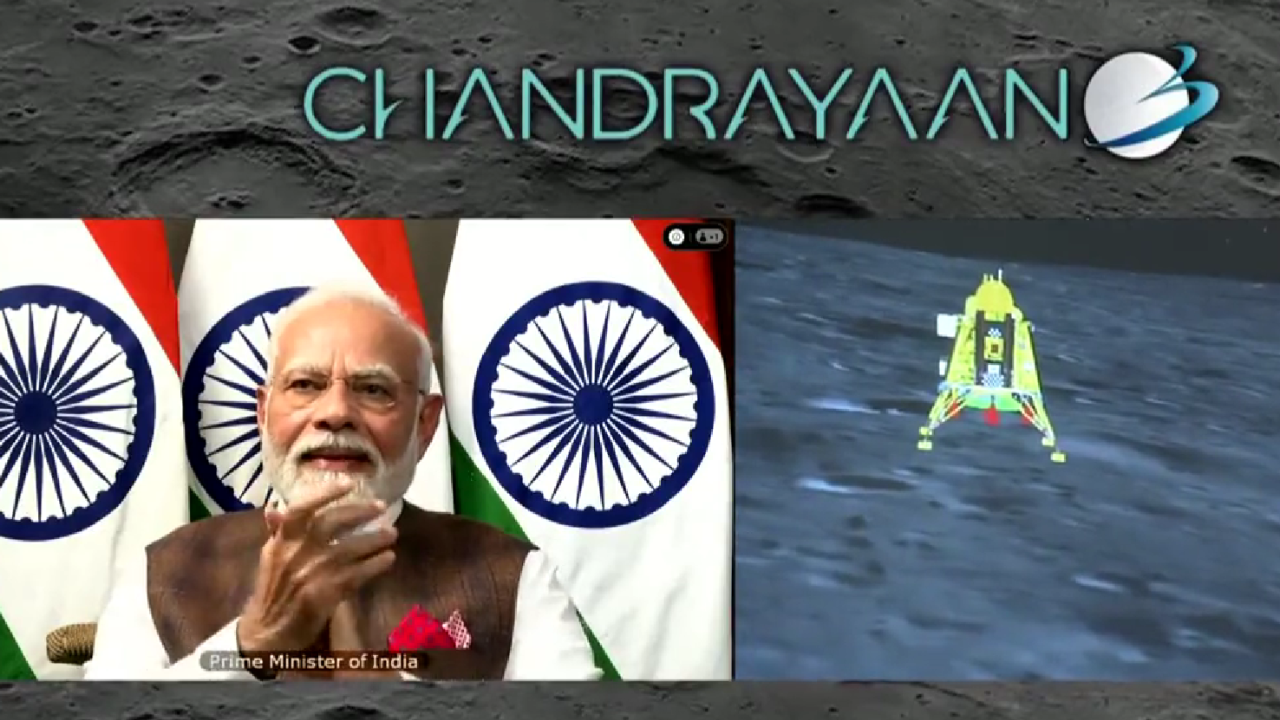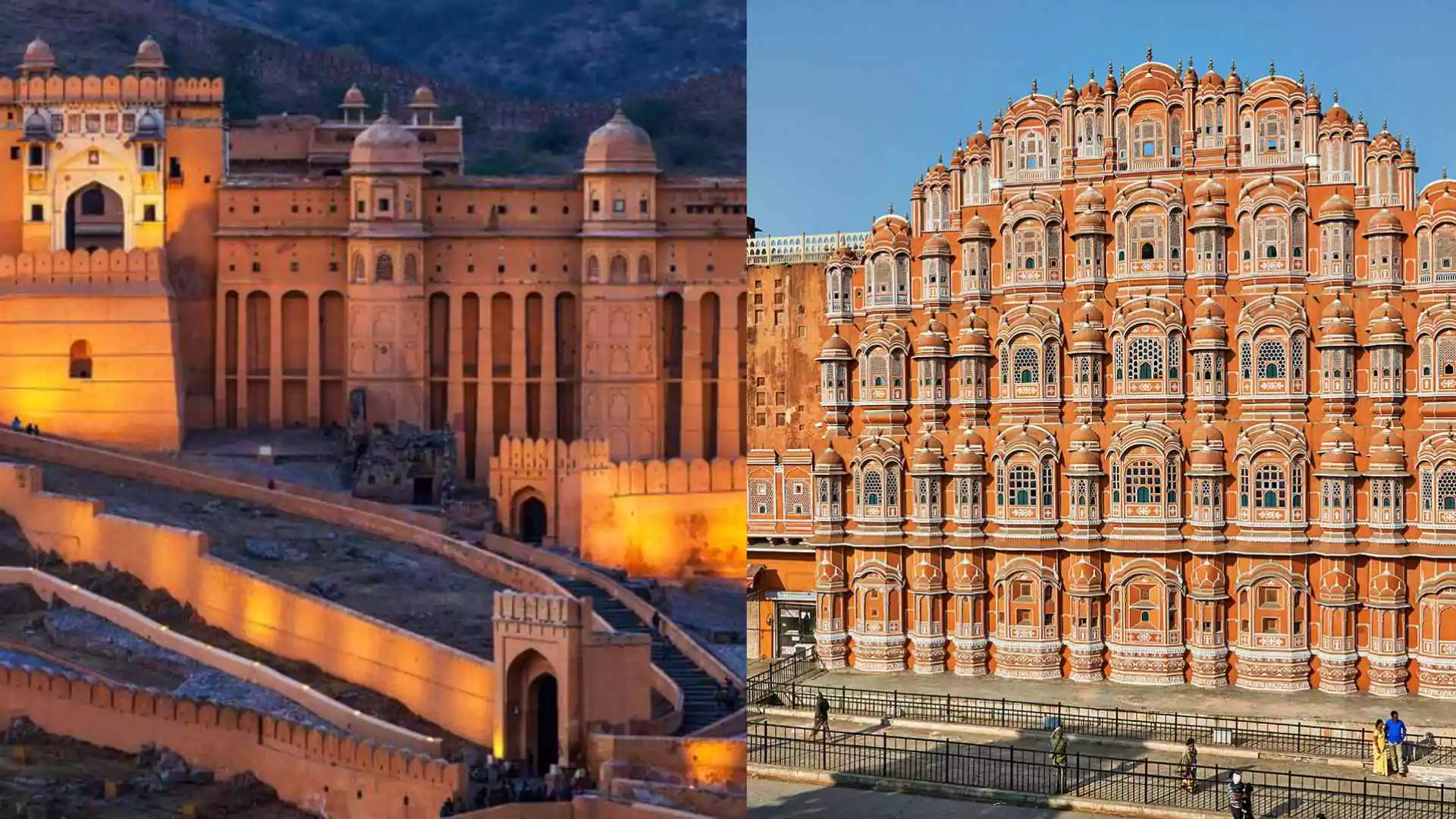In a historic achievement, India marked a significant advancement on Wednesday evening as the Chandrayaan-3 lander module gracefully touched down on the moon’s South Pole. This successful landing concluded the disappointment from the Chandrayaan-2 crash landing four years ago, positioning India as the first nation to accomplish this remarkable feat.
Amid a moment of suspense at India’s ISRO headquarters in Bengaluru, officials erupted into applause as the Vikram lander initiated its controlled vertical descent towards the intended landing site. Prime Minister Narendra Modi, attending the 15th BRICS Summit in Johannesburg, exclaimed, “India has reached the moon!” He excitedly witnessed the live broadcast, breaking into a broad smile and proudly waving the national tricolour flag as the touchdown occurred.
The countdown of Vikram’s descent unfolded, marking 150 meters, 130 meters, 50 meters, and finally slowing as it approached the moon’s surface before achieving a successful landing. With the Pragyaan rover aboard, the Vikram lander’s touchdown on the lunar expanse signified a monumental stride in India’s space exploration journey, serving as a well-earned culmination of ISRO’s extensive dedication over the years.
This accomplishment situates India as the fourth nation—after the United States, China, and Russia—to successfully land on the moon. Moreover, India earns a distinguished place in history as the first to achieve a successful landing on the moon’s southern hemisphere. The anticipation for this momentous event was palpable among billions of people across India and around the world, heightened by Russia’s recent spacecraft mishap.
Leading up to Chandrayaan-3’s planned soft landing, people across India offered prayers across various places of worship, regardless of denomination, in hope of a triumphant mission. The event garnered special screenings across the nation, including schools, science centers, and public institutions. ISRO ensured that live coverage was accessible through its website, YouTube channel, Facebook, and the national broadcaster DD National TV.
The meticulously scheduled landing occurred on August 23, 2023, at 18:04 IST, with Vikram’s powered descent starting at 17:45 IST. ISRO provided close-up images of the moon to assist the lander in determining its precise position using an onboard lunar reference map.
Traditionally, lunar missions have targeted the equatorial region due to favorable conditions, but the lunar South Pole presents a distinctive and more challenging terrain, setting Chandrayaan-3’s achievement apart.
The journey commenced on July 14 with the launch of the spacecraft from the Satish Dhawan Space Centre in Andhra Pradesh’s Sriharikota. Utilizing the GSLV Mark 3 (LVM 3) heavy-lift launch vehicle, the spacecraft was positioned in lunar orbit on August 5. Through a series of orbital maneuvers, it was gradually brought closer to the moon’s surface.
Throughout this journey, ISRO continuously affirmed the spacecraft’s healthy condition. On August 5, Chandrayaan-3 successfully entered lunar orbit, followed by the Vikram lander module’s separation from the propulsion module on August 17. Named after Vikram Sarabhai, a key figure in India’s space program, the lander module underwent deboosting in two phases to adjust its orbit.
Chandrayaan-3’s objectives encompassed a safe and gentle landing on the lunar surface, rover mobility, and in-situ scientific experiments. Upon landing, the lander and rover were programmed to operate for one lunar day, equivalent to 14 days on Earth.
Originating in January 2020, the development of Chandrayaan-3 faced unforeseen delays due to the Covid-19 pandemic. The mission’s approved budget was set at Rs 250 crores, excluding launch vehicle costs.
While Chandrayaan-2 faced setbacks with its partially successful mission due to the lander’s loss of contact, ISRO achieved a significant milestone this week by reestablishing communication between the Chandrayaan-3 lander module and the orbiting Chandrayaan-2 orbiter.
Vikram Sarabhai, the visionary behind India’s space pursuits, emphasized the importance of applying advanced technologies to address societal challenges. His legacy lives on through ISRO, which he established, and his advocacy for India’s space endeavors, helping the nation rise as a spacefaring power.
Also Read: Ex-ISRO Chief Dr G Madhavan Nair Discusses Chandrayaan Missions in Exclusive Interview with NewsX
Catch all the Latest Business News, Breaking News Events, and Latest News Updates on NewsX























